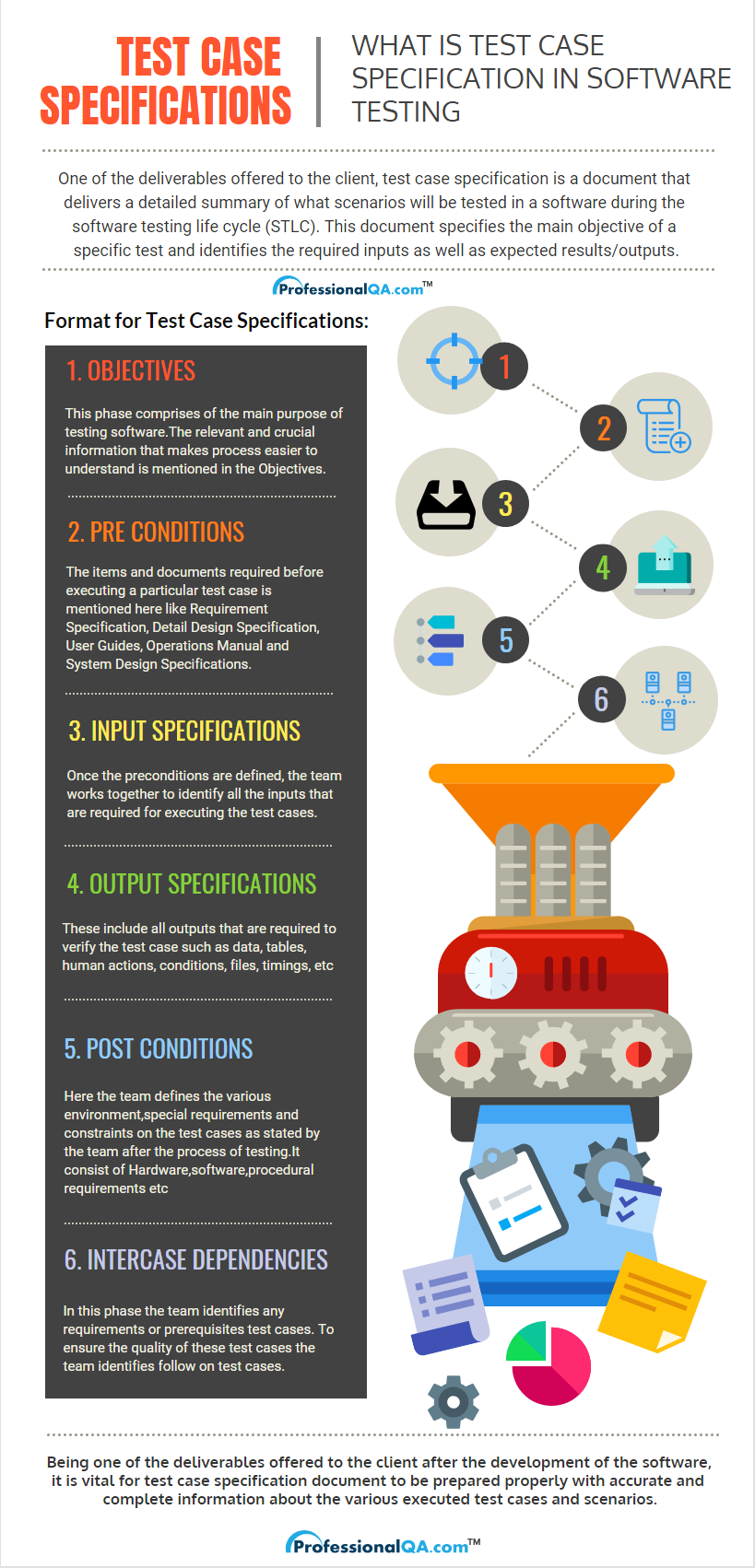

After successfully achieving software testing objectives, the team starts preparing several reports and documents that are delivered to the client after the culmination of the testing process. During this stage these documents and reports are created by the team, which include details about the testing process, its techniques, methods, test data, test environment, test suite, etc. Test Case Specification document, which is the last document published by the testing team is a vital part of these deliverables and is mainly developed by the organization responsible for formally testing the software product or application. Therefore, to help you understand the importance, format and specification of this document, we have curated this article on Test Case Specification.
One of the deliverables offered to the client, test case specification is a document that delivers a detailed summary of what scenarios will be tested in a software during the software testing life cycle (STLC). This document specifies the main objective of a specific test and identifies the required inputs as well as expected results/outputs. Moreover, it acts as a guide for executing the procedure of testing and outline the pass & fail criteria for determining acceptance. Test case specification is among those documents, whose format is set by IEEE Standard for Software & System Test Document (829-1998). With the assistance of test case specification document one can verify the quality of the numerous test cases created during the software testing phase.

Developed by the organization that is responsible for formal testing of the software, the test case specification document needs to be prepared separately for each unit to ensure its effectivity and to help build a proper and efficient test plan. Therefore, the format that is used for creating this document is:
Being one of the deliverables offered to the client after the development of the software, it is vital for test case specification document to be prepared properly with accurate and complete information about the various executed test cases and scenarios. Moreover, to validate the quality of the whole process, the team provides authorized and approved documents, which further help them improve the effectiveness of the whole report. Hence, with the assistance of this report, software testers can easily define the specifications of testing as well as the process of testing to the client.
Advertisement: